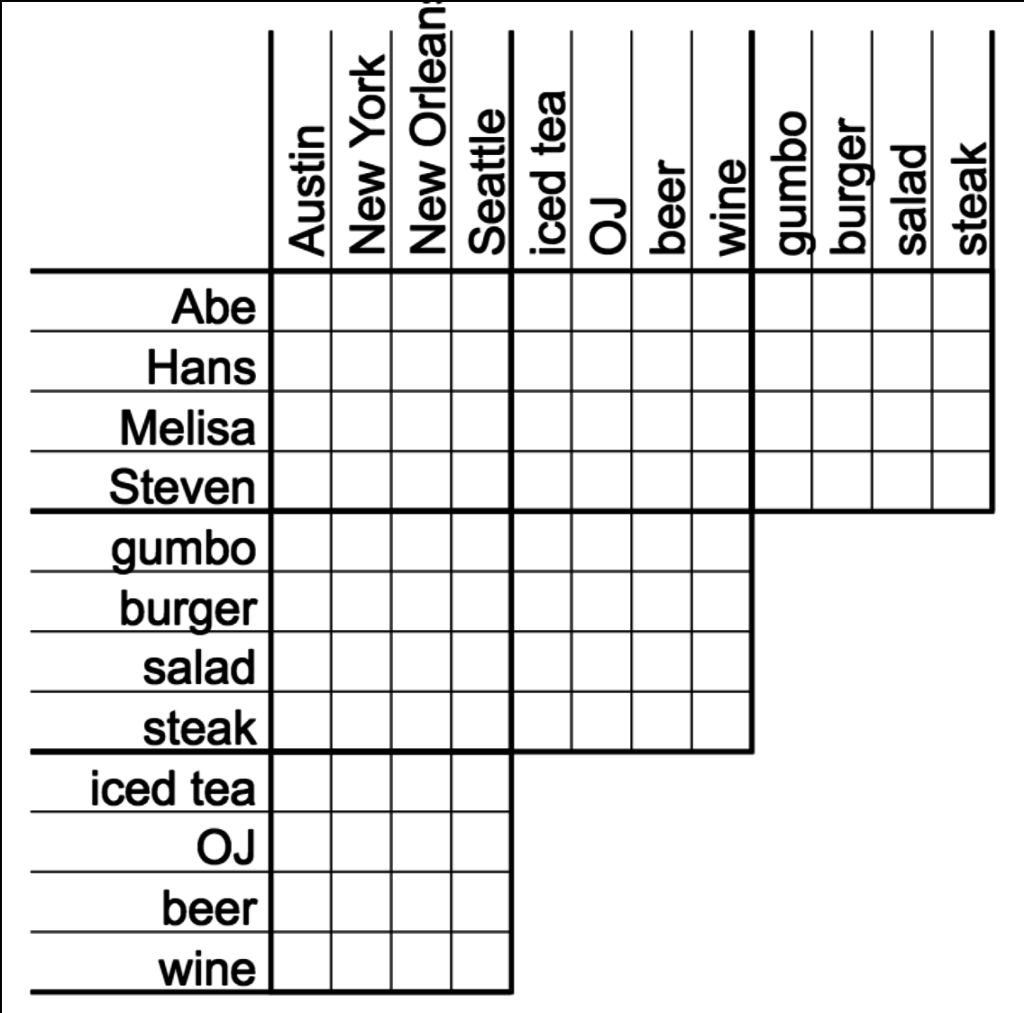 I’ve been a huge fan of logic puzzles since I was a kid, and for a long time I’ve wanted to try my hand at building a system to generate them.
I’ve been a huge fan of logic puzzles since I was a kid, and for a long time I’ve wanted to try my hand at building a system to generate them.
This represents the first pass of such a system- a puzzle is generated, along with 16 clues, pulled from four different types:
- Assertion Clues that state that two things are linked (“Alice ordered a burger”)
- Negation Clues that state that two things are notlinked (“Alice did not order a burger”)
- List All Clues that give one fact for each component of a solution (“The four people were: Alice, the person that ordered the steak, the person that ordered a beer, and the person from New Orleans”)
- Either / Or Clues that generate two facts, one true and one false (“Either Alice ordered a burger OR the person from New Orleans ordered a steak”)
I’m pretty happy with what I have so far, though the big missing feature is that there’s no guarantee that a given puzzle is solvable with the clues given. For that, I plan on approaching things by starting with all the possible values, and trimming things away as clues are applied. Once there’s only a single option for each value, then the clues are sufficient.
There’s also a huge amount of room for improvement with respect to the way clue text is generated, so that’s something I want to improve as well. The ultimate goal with this is less about just generating puzzles and more about building logic puzzles into other kinds of games.
To play with it yourself, head here. Note that at present, the generated image is meant to be printed, rather than solved online. That’s mainly because this incarnation is more about puzzle generation (for later inclusion in other projects). Also note that the solution is printed upside-down at the bottom of the page.
projects
game prototypes, javascript, logic, puzzles
 Follow
Follow


